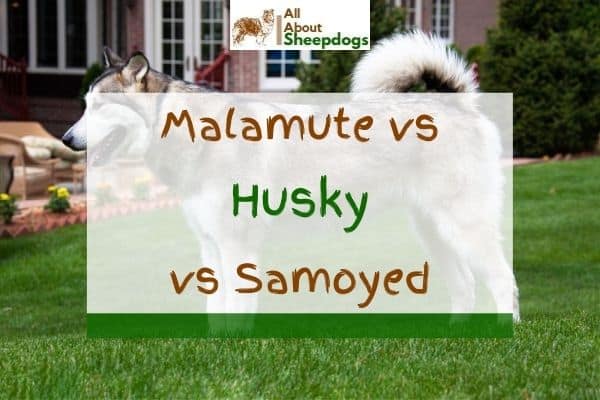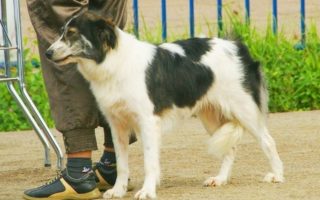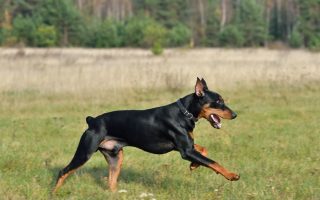All dogs are charming in their unique way. However, some dog breeds tend to stand out due to their personality, and among those dog breeds that stand out are the Malamute, Huskies, and the Samoyeds.
Malamute vs Husky vs Samoyed have all warmed their way into our homes and hearts not only because of their striking looks but also because of their big and charming personalities.
So, if you are wondering (just like most of us) which dog to adopt among these 3 mood-elevating dogs, then worry not, as this article got you covered.
I’ll walk you through the Malamute’s, Husky’s, and the Samoyed’s breed information that capture into detail their physical appearance, life expectancy, medical conditions, temperament, and their fascinating history.
I’ll also provide you with a brief summary of the main differences between these 3 dog breeds.
| Attributes | Malamute | Husky | Samoyed |
| Good For First Time Owners | No | No | Yes |
| Good Guard Dog | No | No | No |
| Apartment Friendly | No | With Enough Exercise | With Enough Exercise |
| Good Family Dog | Yes | Yes | Yes |
| Shedding | High | Moderate to High | High |
| Barking And Howling | Low | Less Barking, Lots of Howling | High |
| Height | 23-25 inches (58-64 cm) | 20-24 inches (51-61 cm) | 18-24 inches (48-60 cm) |
| Average Life Expectancy | 10-14 Years | 12-14 Years | 12-14 Years |
[wpsm_toplist]
Alaskan Malamute – Dog Breed Information

History
The Alaskan Malamute (Also Known as Mal, Mally) was bred to pull sleds and work about 5000 years ago by the Inupiat people, who came from the tribe of Malhemuts.
It is from this tribe that the Alaskan Malamutes got their name from. These dog breeds are among the oldest arctic sled dogs to be bred in Alaska.
Scholars and the Mal fanciers believed that this sturdy breed was a descendant of the arctic wolves for a long time.
Studies conducted have shown that the Alaskan Malamute is a descendant of the Siberian husky and the Alaskan Husky due to the similarity in the genetic makeup.
Physical Appearance
The Alaskan Malamute can grow to a height of 23-25 inches long and weigh around 75-85 pounds.
However, some of the dogs exceed this standard weight and may weigh approximately 100 pounds.
The males are typically larger than the females, both in size and weight.
These dogs have a thick double coat, which may be solid white, gray-white, sable white, black white, seal white, and red white.
This sturdy dog breed has a broad head with a bulky muzzle that perfectly blends with brown almond-shaped eyes.
This resilient dog also has medium-sized ears which are triangular in shape and stand erect when this dog is alert.
It also has a very furred tail that may assume a wavy or a corkscrew shape.
Lifespan And Health Conditions
These hounds have a life expectancy of 10-14 years.
Below are some of the medical conditions that lower their life expectancy and quality;
- Cataracts
- Canine diabetes plagues the Mally at around 6-7 years of age
- Hypothyroidism-Under production of vital thyroid hormones
- Hip dysplasia- a genetic condition that causes partial or total hip joint dislocation
Temperament
These dynamic and vibrant dogs are known for their diligence when it comes to performing the tasks they have been assigned to do.
Despite their ferocious and powerful looks, these hounds are immensely affectionate to their owners, outgoing, and very playful.
The Alaskan Malamute can become quite bossy and strong-willed, especially when you have not asserted who’s the ALPHA in the house.
So don’t hesitate to correct its bad behavior (do it like a pro! don’t shout or yell at your hound), give it commands like you mean it, and always reinforce good behaviors with treats.
Fun Facts About The Malamute
It became the state dog of Alaska in 2010
Due to their striking resemblance to wolves, the Alaskan Malamutes have been featured in many movies casting as wolves
They are sensational characters in the novels of Jack London( a pioneer of the American magazine and commercial fiction) and Rudyard Kipling (a renowned English journalist and a poet)
An adult Alaskan Malamute (usually male) can pull a load weighing 1100-3300 pounds on its own.
However, this is generally dependent on the physical stature of the Malamute and its training
These hounds played an active role in WW1 and WW2. They sniffed for mines, transported food supplies, and ammunition to the outposts in the mountains
Siberian Husky – Dog Breed Information
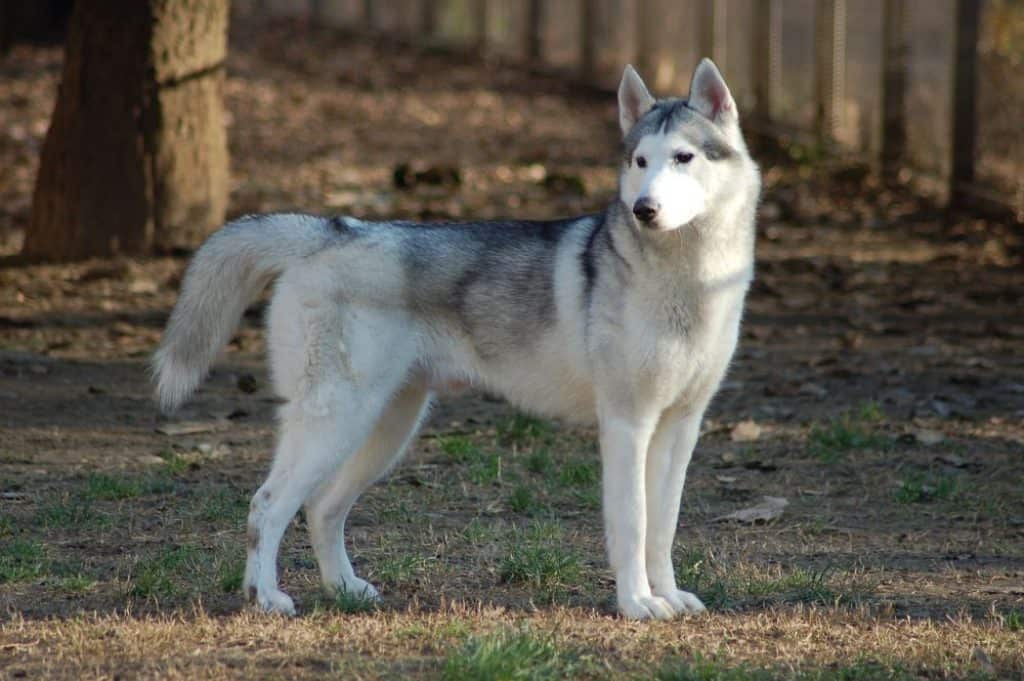
History
The Siberian Husky (Also known as Sibe, Husky, or Chukcha) were born to run, and they sure lived up to their innate running instincts when they ran for 340 miles to save a diphtheria-stricken town.
These hound has been in existence for the last 3000 years.
It was bred by the Chukchi people (who are nomads native to Northeast Asia) to help them in pulling sleds.
This breed was recognized and registered by the American Kennel Club in 1930.
Physical Appearance
The Siberian huskies can grow to around 20-24 inches and weigh approximately 33-48 pounds as adults.
Females are usually smaller in both length and weight than males.
This high-spirited dog has a very dense water-resistant double coat that can withstand extreme temperatures of -60° Fahrenheit (-51° Celsius).
The coats come in appealing shades of solid white or black to red and white, black and white, gray and white, sable and white, or silver-gray.
They have a medium-sized head with a straight muzzle, triangular ears, and brown or blue eyes.
Sometimes a Sibe can have eyes that are each with a different color.
Most of the time, a Siberian Husky will have a well-furred or bushy tail, with a white shade at the tip of the tail that’s typically curved over its back.
Lifespan And Health Conditions
Huskies can live for around 12-14 years.
Feeding these affectionate dogs with the right nutrition and taking them to regular vet checkups may add them at least 1-2 years of their lifespan.
Below is a list of some of the medical conditions these energetic dogs are susceptible to;
- Hip dysplasia
- Hypothyroidism
- Eye conditions- cataracts, progressive retinal atrophy, cataracts
Sibes can easily get overweight if they are not physically stimulated with enough exercise.
So, ensure that you take your dog out for a walk daily. At least 2 hours of exercise a day are required .
Note these hounds are notorious for their ‘running’ oriented nature.
So please don’t leave them alone or unleashed when you are in the outdoors, as they can easily vanish from your sight.
Temperament
The Husky is quite an independent dog, to the extent that it may focus more on its needs (running needs in particular) that it even forgets about you or other pets around it.
Despite their ‘love for themselves,’ these hounds are quite kid and pet friendly, and they won’t cause any tantrums when left with other dogs of different breeds.
These energetic dogs can cover up to 137 miles in a day.
Their inquisitive and adventurous nature makes them a good fit for a dog enthusiast who loves hiking.
Huskies are also infamously stubborn, so ensure that your hound’s needs are met, otherwise be ready for its endless classic howling (the sound your Husky makes when it’s acting up)
Samoyed – Dog Breed Information
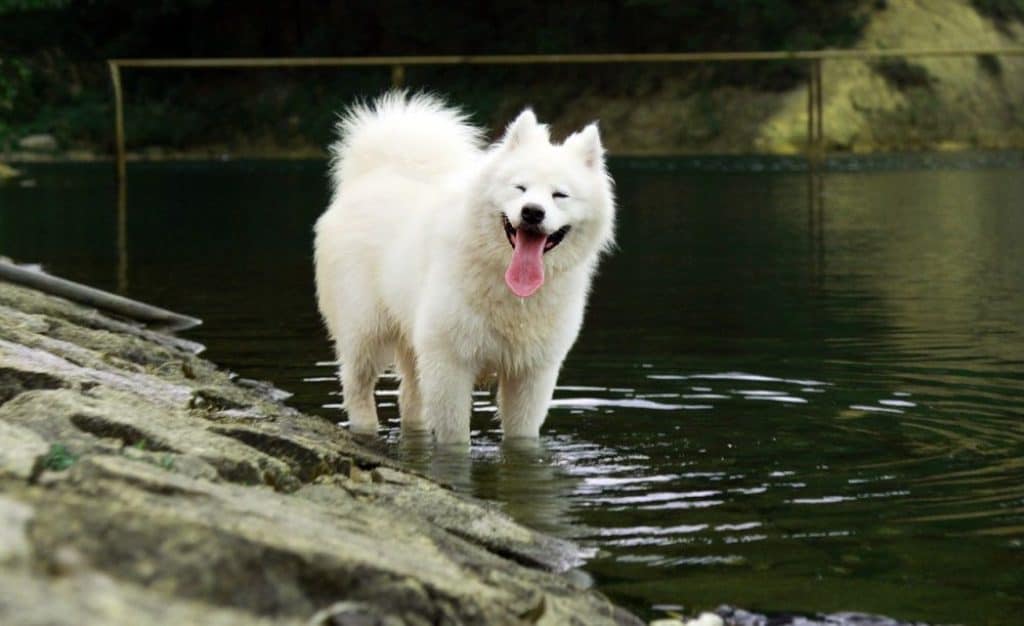
History
Samoyeds (Also known as Smiley dog or Sammie Smile) were bred by the nomadic people known as Samoyedes, who inhabited the Tundra of Northern Russia Siberia around 1000 BCE (Before the Common Era).
These hounds were bred to herd reindeers, pull or haul sleds and hunt for prey.
European explorers around the mid-1800 had a chance to interact with these easy-to-love dogs and later exported them to England.
The Samoyeds were part of the European expeditions to the Arctic and Antarctic poles.
A British Zoologist by the name Ernest Kilburn-Scott later named this extremely extroverted dog Samoyed after spending time with the Samoyede people.
Physical Appearance
The Samoyeds can grow up to 18-24 inches long and weigh around 35-64 pounds as adults.
These hounds have a dense double coat, with the undercoat being short and soft while the outer coat is long and coarse.
Samoyeds typically have coats that are white or cream.
Sometimes these hounds can have a biscuit coloration, which is usually located in the tips of their ears. This hound normally sheds at least once or twice a year.
Their fur is of high quality to the extent that it can be used for knitting.
Its almond-shaped eyes may be black, brown, or blue (rare).
This non-aggressive dog has medium-sized triangularly shaped ears that perfectly blend with a medium-sized head.
It typically has its tail lying over the back and always on one side.
Lifespan And Health Conditions
A Samoyed can live for 12-14 years as long proper nutrition and exercise are strictly maintained when it’s still young.
Below are some of the medical conditions that can lower the life expectancy of a Samoyed;
- Hypothyroidism
- Hip dysplasia
Kidney conditions – Known as Samoyed hereditary glomerulopathy
Heart conditions – Aortic and pulmonary stenosis (narrowing of a blood vessel)
Sebaceous adenitis – A treatable and rare autoimmune disease that causes a crusting cornification abnormality.
Canine diabetes – A condition in which your dog’s blood sugars levels are not maintained at normal physiological levels
Temperament
These kid and pet-friendly dogs are very playful and energetic in nature.
Their extremely outgoing, happy (no wonder the nicknames Sammie smile or Smiley dog) and non-aggressive nature have made them popular among most dog parents in the USA.
It’s important that you note Samoyeds’ can be quite stubborn, especially when they feel neglected or bored.
Be sure to keep them busy, either by providing them with toys or getting them another dog companion, to avoid your intelligent dog from turning into aggressive and destructive behaviors.
Malamute vs Husky vs Samoyed – What’s The Difference?
| Malamute | Husky | Samoyed |
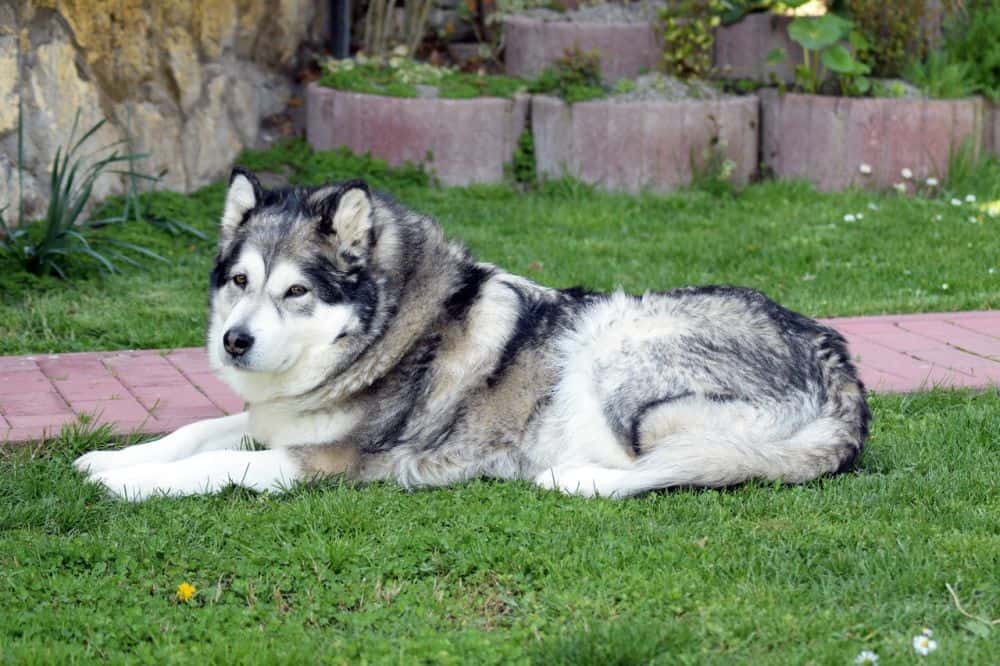 |  | 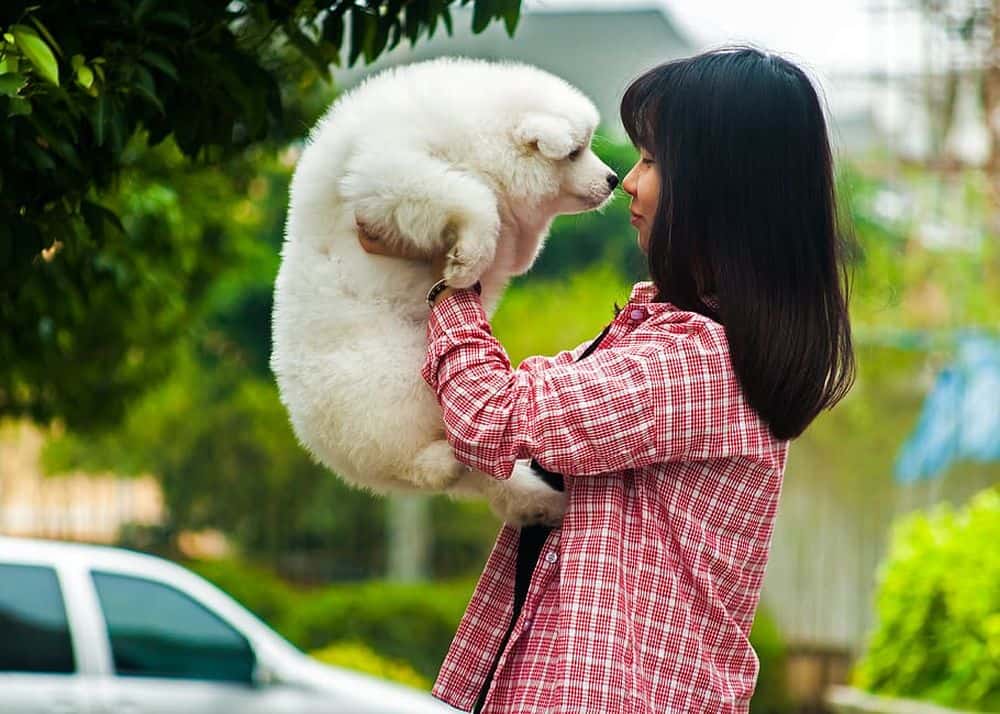 |
Shedding
Malamutes are VERY heavy shedders
Huskies shed a bit less when compared to Malamutes and Samoyeds
Samoyeds shed more heavily than Huskies but not more than the Malamutes
Barking
Samoyeds bark a lot!
The Huskies bark moderately, while the Alaskan Malamutes, on the other hand, rarely bark.
Size
Malamutes are 23-25 inches long – This makes them bigger than the Husky and Malamute
Huskies are 20-24 inches long – Bigger than the Samoyed but smaller than the Malamute
Samoyed is 18-24 inches long – It is the smallest of the 3 dog breeds
Grooming And Maintenance
Out of the 3 dog breeds, the Samoyeds hold the number 1 title for the most time required to groom this dog breed adequately.
The Malamutes rank number 2 while the Huskies rank number 3.
So if you are looking for a hound that requires less time to groom, I recommend that you adopt a Husky as it only needs its hair to be brushed once a week and bathed 1 time a month.
Sensitivity (In Terms Of Attachment And Emotions)
Malamutes are more sensitive than both Huskies and Samoyeds dog breeds
Samoyeds are a bit more sensitive than Huskies
Biting Potential
Malamutes have a more biting potential when compared to the Husky and the Samoyed dog breeds
Huskies have a more biting potential than the Samoyed dog breed
Wandering And Escaping Potential
Huskies have a higher potential of wandering, running, and escaping when compared to the Malamutes and the Samoyed dog breeds
Alaskan Malamutes have a more wandering and escaping potential than the Samoyed dog breed
Health Conditions
Samoyeds are more susceptible to acquired and genetic health conditions than the Husky and the Samoyed dog breeds.
Malamutes tend to have more medical conditions than Husky. This makes the Huskies have the least number of medical conditions plaguing them.
Independent Nature
Malamutes are more independent than the Huskies and Samoyeds and won’t mind staying for long hours alone
Huskies are slightly independent as they can only spend a few hours alone
Samoyeds are even less independent when compared to the Huskies. So leaving them alone for long hours will be difficult if you choose to adopt this friendly dog
Intelligence
Malamutes are more intelligent than the Huskies and the Samoyeds
Samoyeds are a bit more intelligent than the Huskies as they tend to grasp training a bit faster
Aggressiveness
Malamutes are a bit more aggressive than the Samoyeds and the Huskies.
On the other hand, the Samoyeds display the least aggressive behaviors when compared to the Husky.
Malamute vs Husky vs Samoyed – Which Dog Is The Best For You?
Malamute vs Husky vs Samoyed all these dog breeds make a good family pet, and to some extent, they also make excellent guard dogs.
The Malamutes rarely barks; Huskies bark moderately while the Samoyeds bark a lot.
Samoyeds are more susceptible to health conditions when compared to the Huskies and the Malamutes.
Malamutes can be quite aggressive when compared to the Husky and the Samoyeds.
Note, all these 3 breeds require daily exercises and a regular vet visit to live a healthy dog life.
Proper nutrition also substantially contributes to increasing these dog’s life expectancy.
Adequate socialization and training of these hounds should be done when the Malamutes, Husky, and Samoyed are young to avoid a battle for dominance.
Ensure that you adopt your dog from a certified and known breeder to avoid getting a pup with a low-quality genetic makeup that may predispose it to hereditary diseases.
Before adopting any of these life-enhancing dogs, ensure that you fully understand your personal preferences and make certain that they align with your dog’s temperament.
Don’t forget to install a high fence that goes at least 5-6 feet below the ground if you choose to adopt a husky, as these dog breeds have a high potential of escaping.

